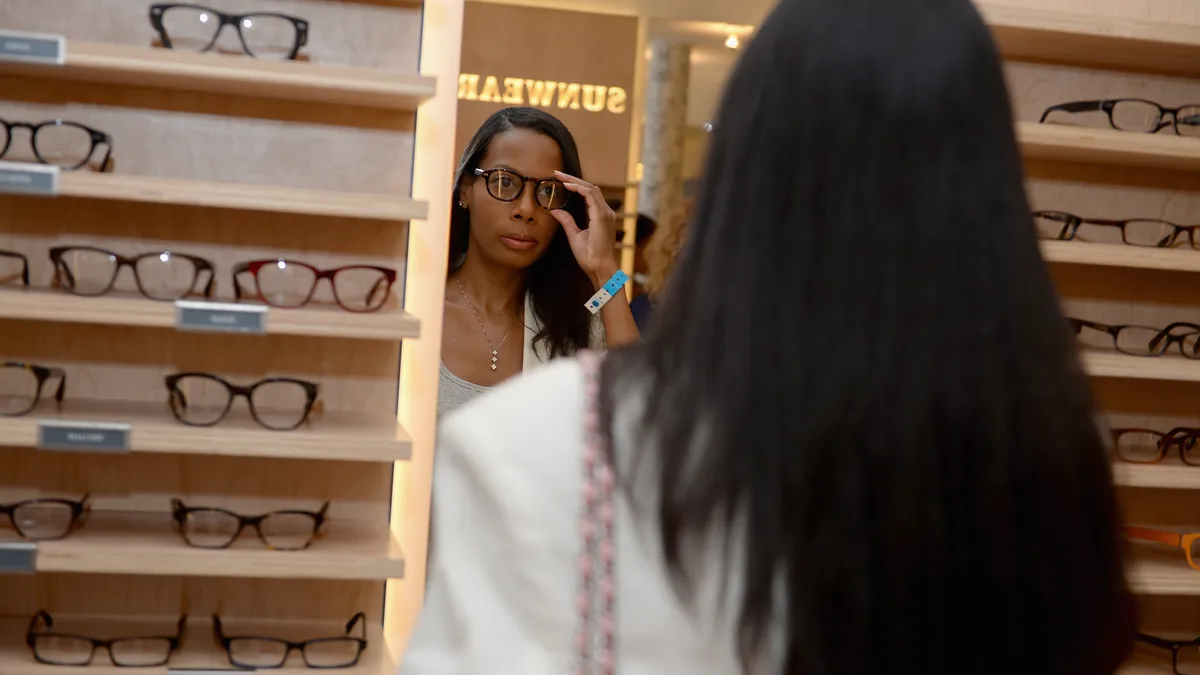Dive Brief:
-
Warby Parker on Tuesday filed papers with the Securities and Exchange Commission to go public via direct listing on the New York Stock Exchange under the ticker symbol "WRBY." The brand, in June, confidentially filed a draft document with the SEC for a public offering.
-
In the S-1 filing, the DTC eyewear brand revealed that in the six months ended June 30, its net revenue was $270.5 million, up 53% from the same period last year.
-
And while its losses improved from 2020, its operating loss and net loss in the first half of the year were $5.8 million and $7.3 million, respectively.
Dive Insight:
Warby Parker was among the first direct-to-consumer darlings to enter the market and act as a disruptor to the industry.
The eyewear brand was founded in 2010 by Dave Gilboa and Neil Blumenthal after the two were frustrated with how expensive and difficult it was to purchase glasses. Since its founding, Warby Parker has amassed more than 2 million active customers and exceeded $393 million in revenue in its most recent fiscal year.
But, like many other DTC brands that have gone public, the brand has struggled to turn a profit. In its last three fiscal years, Warby Parker has either reported losses or broke even, with it reporting a net loss of $55.9 million in 2020. Advertising costs in 2020 grew 35% year over year to $58.5 million.
High marketing and advertising costs associated with acquiring customers are often a factor hindering many DTC brands from reaching profitability. To combat this, many turn to stores to serve as an alternative marketing channel. Warby Parker has expanded its store fleet to over 145 since opening its first location in April 2013, and targets four-wall margins of 35%. Retail stores represented 62% and 65% of net revenue in 2018 and 2019, respectively. When stores were temporarily closed due to the pandemic in 2020, net revenue from its retail stores dropped to 40% but has since started to tick back to pre-pandemic levels at 50% as of June 30, according to the filing.
Warby Parker’s filing also comes as more brands pursue public offerings through means other than initial public offerings. Kids gaming app Roblox went public via direct listing earlier this year, as did Spotify in 2018.
Special purpose acquisition companies — or SPACs — have become surged in popularity this past year, with 248 companies going public through the avenue in 2020, up from just 59 in 2019, according to data from SPACInsider. Bark, the company behind subscription boxes BarkBox and Super Chewer, announced late last year its intent to go public by way of SPAC.














